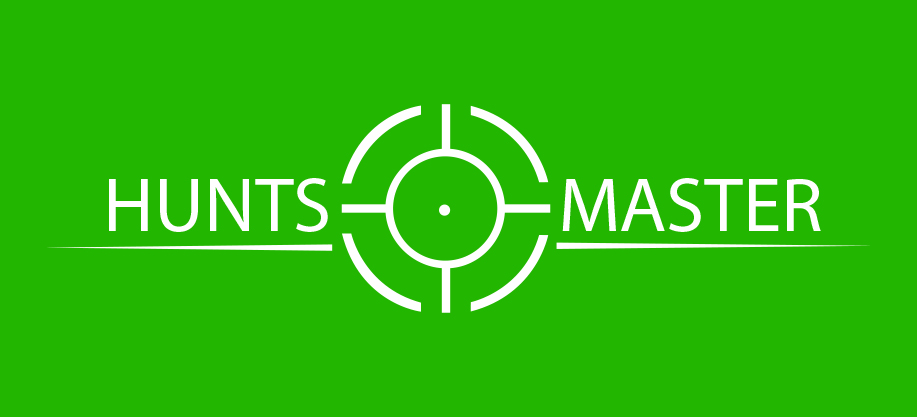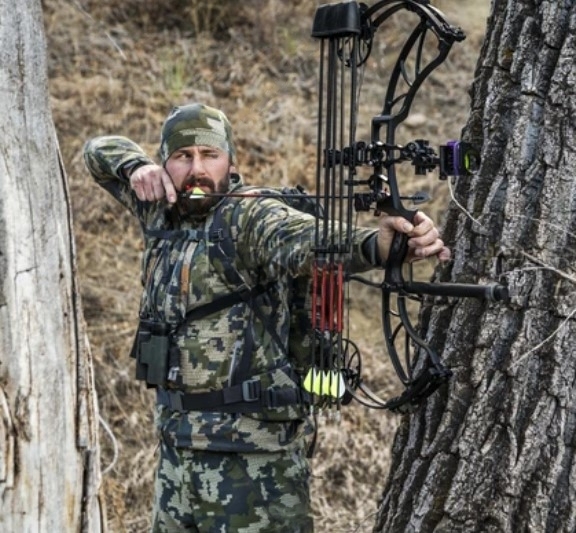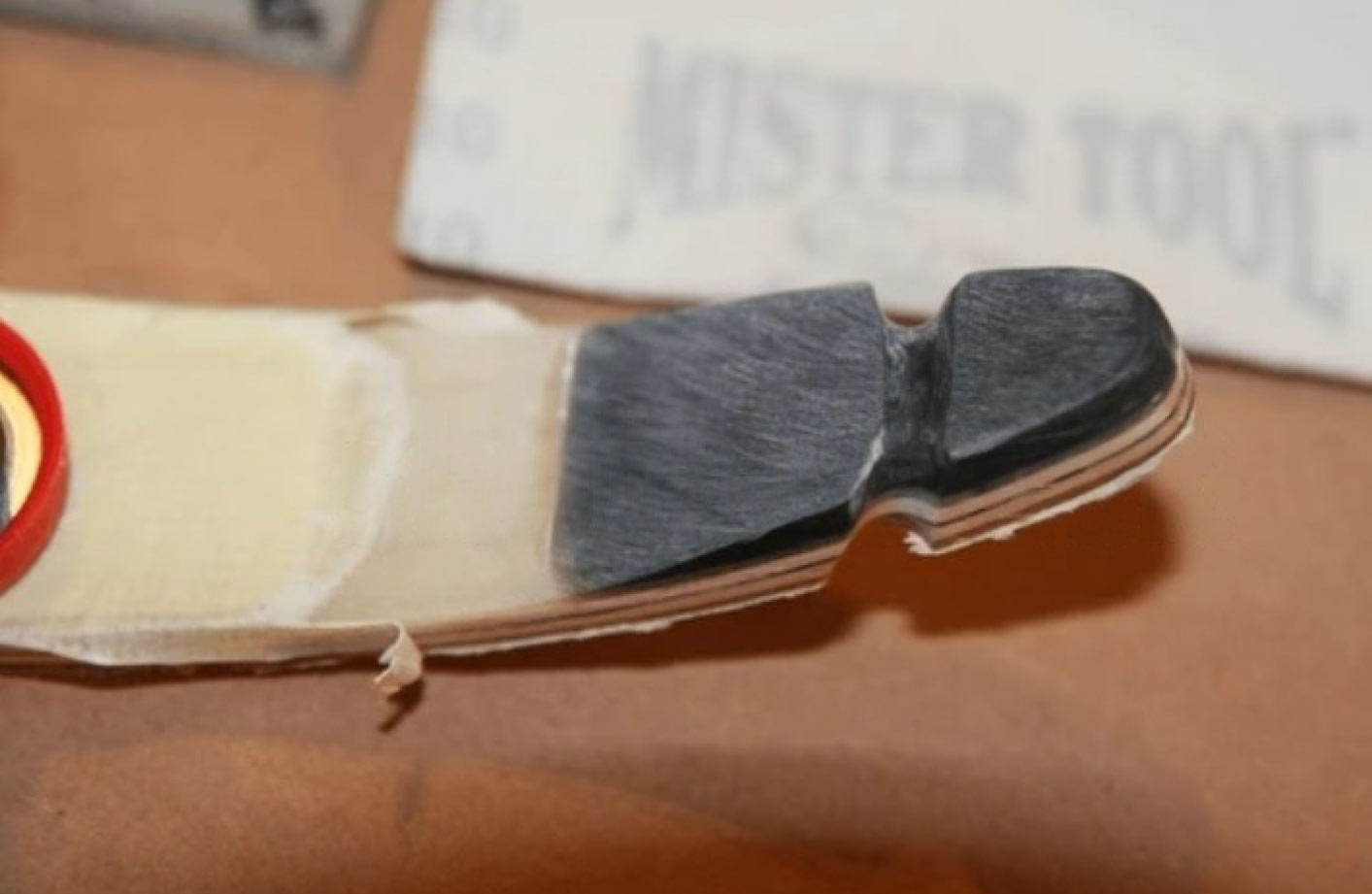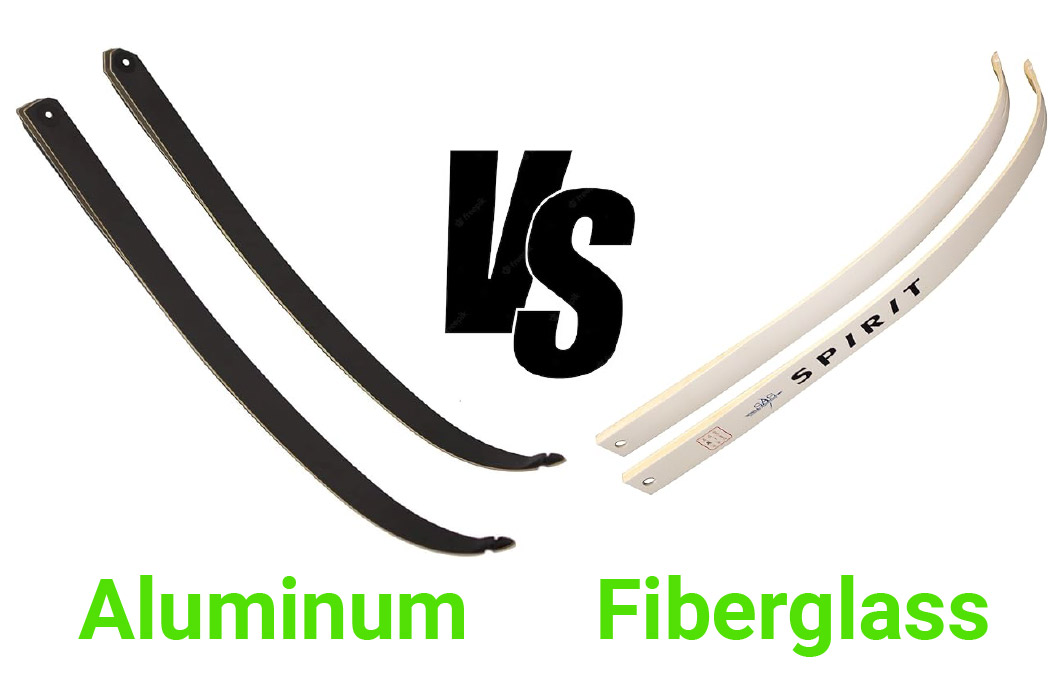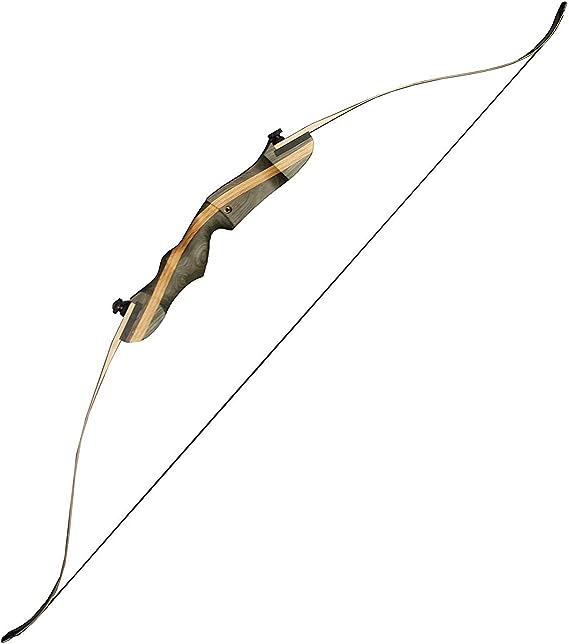Are you prepared to go to the next level in your archery skills? If you’re a fan of the recurve bow and would like to improve your shooting skills for competition, this guide is for you.
We’ll go through everything from finding the correct recurve bow and gear to improving your technique and getting in the right mindset.
Let’s get started!
Choosing The Right Recurve Bow for Competition
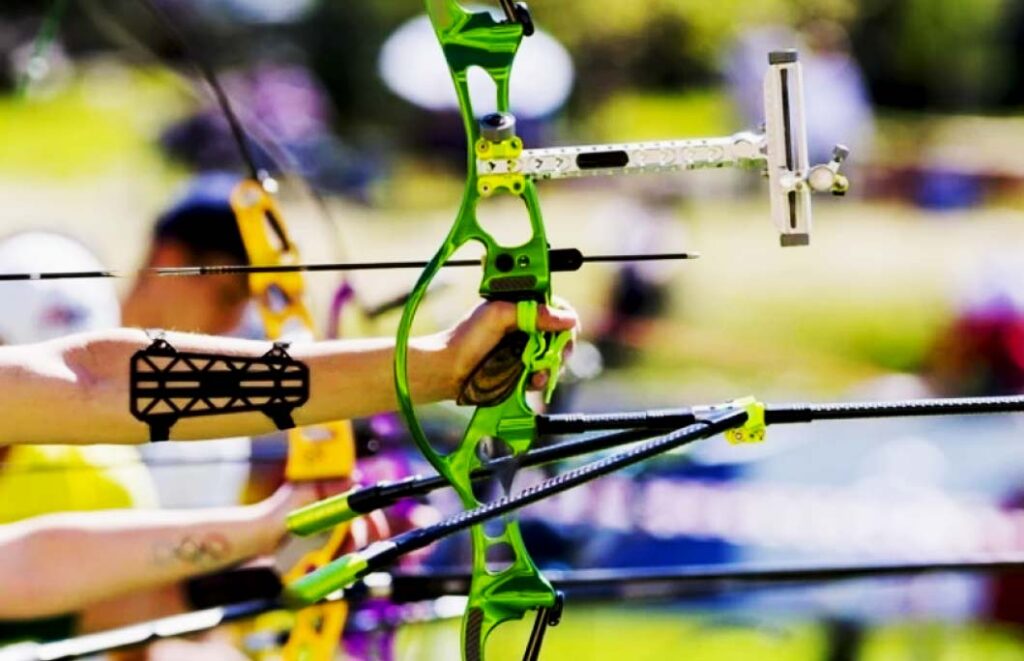
Accuracy is the most important thing to look for in a competition recurve bow. It’s important to think about your skill level, how you like to shoot, and the bow’s draw weight, length, and material.
For 3D events, you might want to choose something light that won’t tire you out when you have to walk a long way between targets.
By holding the arrow steady while you aim, an arrow rest can help you hit your target more often.
In the end, it takes time and practice to find the right bow. Try out different types to see what feels best in your hands and gives you the best results in competition.
Bow Material
Different materials used in recurve bows include wood, fiberglass, carbon fiber, and aluminum. Wood is a traditional choice that offers flexibility and a classic look.
Fiberglass provides durability and strength, making it suitable for beginners or those on a budget.
Carbon fiber is lightweight and offers excellent performance for competitive archery. Aluminum is another popular choice due to its strength-to-weight ratio.
- Pros of wood: flexibility, classic look
- Cons of wood: Less durable than other materials
- Pros of fiberglass: durability, affordability
- Cons of fiberglass: Not as high-performing as other materials
- Pros of carbon fiber: lightweight, excellent performance for competition shooting
- Cons of carbon fiber: It can be expensive.
- Pros of aluminum: strong yet lightweight
- Cons of aluminum: It may not have the same feel as traditional wooden bows.
When choosing the right material for your needs in 3D or distance shooting competitions with a recurve bow, consider factors such as your experience level and budget.
Beginners may find fiberglass bows more suitable due to their affordability and durability. Competitive archers who prioritize performance may opt for carbon fiber bows despite their higher price point.
Consider Your Skill Level and Shooting Style
Evaluate your strengths and weaknesses to determine what type of recurve bow would suit you best in competition. Consider your shooting style and the competition format as well. Here are some factors to consider:
- Accuracy: Choose a bow that allows for precise aiming.
- Arrow rest: Different types of arrow rests can affect accuracy, so choose one that complements your shooting style.
- Bow material: The weight and composition of the bow affect accuracy and draw weight, so factor those into your decision-making process.
Ultimately, it’s about finding a balance between what feels comfortable for you and also maximizing performance on the field.
Factor in draw weight, length, and material
To improve your accuracy in 3D archery competitions, it’s important to factor in the draw weight, arrow length, and material of your recurve bow. Here are a few things to keep in mind:
- Select an appropriate draw weight for your experience level. The draw weight determines how much force needs to be exerted on the string before it releases. Choose a weight that you can comfortably handle while maintaining good form.
- Determine the ideal arrow length for maximum accuracy: A longer arrow will usually produce more accurate shots, but it may not be practical for all shooting scenarios. Experiment with different lengths until you find one that works best for you.
- Consider different materials, such as wood or carbon fiber. The material of your arrows can impact their trajectory and speed. Due to its consistency and durability, carbon fiber is frequently the material of choice for competitive archers.
By taking these factors into account when selecting a recurve bow and arrows, you’ll have a better chance of success during competitions or even just practicing at an arrow rest.
Perfecting Your Form and Technique


Competing with a recurve bow requires careful practice of correct form and technique. Improving your posture, grip, draw length, and anchor point can help you become more consistent and accurate. Pull the string back using the appropriate muscles and keep your shoulders relaxed.
Mastery of the release and follow-through is also crucial to your form. If you want your shots to be consistent, you need to make sure your release is smooth and your follow-through doesn’t cause the bowstring to twitch or jerk.
Continue practicing until the aforementioned actions become automatic, at which point you will be able to devote your complete attention to striking each target precisely.
Focus on Consistency and Accuracy
To win a recurve bow tournament, you need to be consistent and accurate. Consistent practice strengthens muscle memory, which in turn improves shooting form and accuracy.
Taking a deep breath and concentrating on your target are only two components of a reliable pre-shot ritual.
Using a consistent anchor point for each shot can also improve accuracy by ensuring the same starting position every time.
Here are some tips:
- Practice consistently to build muscle memory.
- Follow a consistent preshot routine.
- Use a consistent anchor point for each shot.
By focusing on consistency and accuracy, you can take your recurve bow competition skills to the next level.
Master The Release and Follow-through
Focus on letting your fingers relax during the release so you don’t jerk or flinch, which could cause mistakes.
One of the most important parts of learning the release is making sure the bow arm stays still after the release.
Remember that a good follow-through helps you keep control of your shot and helps you figure out where you went wrong.
To help improve your release and follow-through technique,
- Relax your fingers while drawing back the string.
- Hold for a second or two after releasing.
- Keep the bow arm still throughout the process.
Learn to control your breathing and heart rate
Practice deep breathing techniques before shooting to increase your focus and control your heart rate during competitions. Biofeedback devices can also be helpful tools for learning how to regulate your heart rate.
Here are some tips for controlling your breathing and heart rate during recurve bow competitions:
- Practice deep breathing techniques before shooting.
- Learn how to use biofeedback devices.
- Avoid rushing shots due to an elevated heart rate.
- Take time to calm yourself before each shot.
Strategies for Recurve Bow Competitions


One key strategy for success in recurve bow competitions is being familiar with the rules and scoring system. Take time to thoroughly review the competition guidelines and understand how points are awarded, as this can greatly impact your approach to competing.
Another effective strategy is practicing under the same conditions and distances you’ll encounter during the competition.
This helps build muscle memory, hone your technique, and develop confidence in your abilities when it’s game time.
Don’t underestimate the importance of preparation; a well-practiced archer can make all the difference on competition day!
Know The Rules and Scoring System
Familiarize yourself with the official rules of competitions to avoid any penalties or disqualifications.
Understanding how scoring works in recurve bow competitions is important, as it can vary depending on the event and round type.
It’s also beneficial to learn about different types of rounds and events, such as individual vs. team competitions, so you can prepare accordingly and strategize effectively during the competition.
Practice Under Similar Conditions and Distances
To perform well in a recurve bow competition, it is essential to practice under similar conditions and distances as the actual event.
This will help you become accustomed to the environment and reduce any surprises on the day of the competition.
Here are some tips for practicing like a pro:
- Set up a practice range that closely resembles competition settings.
- Experiment with shooting distances to prepare for various scenarios.
- Practice shooting in different weather conditions to adjust your technique.
By practicing under similar conditions and distances, you’ll be better prepared for any curveballs thrown at you during an actual recurve bow competition. So get out there, set up your range, and start perfecting your aim!
Mental Preparation and Visualization Techniques
Developing a pre-shot routine is an effective way to calm nerves before shooting in a recurve bow competition. This will help you focus on the task at hand and reduce anxiety, leading to better performance.
It can include physical movements or mental cues that signal your body and mind that it’s time to shoot.
Visualization techniques are also valuable tools for mental preparation. By picturing yourself hitting successful shots beforehand, you build confidence in your ability to perform well under pressure.
Using relaxation techniques such as deep breathing or progressive muscle relaxation can help lower stress levels and increase focus during competitions.
Here are some tips for developing a pre-shot routine:
- Take a few deep breaths before each shot.
- Pick out one specific thing to focus on (e.g., your anchor point).
- Visualize the shot in detail before executing it.
And some suggestions for visualization:
- Picture yourself executing the perfect shot.
- Imagine how it will feel when you hit the bullseye.
Lastly, give these relaxation techniques a try:
- Progressive muscle relaxation involves tensing and then releasing each muscle group from head to toe.
- Deep breathing exercises aim to slow down the heart rate by taking long inhales and exhales.
Equipment and Accessory Tips
To perform well in a recurve bow competition, having the right equipment and accessories is crucial.
Quality arrows that are matched to your bow and shooting style can make a significant difference in your accuracy and consistency.
Investing in reliable accessories like a stabilizer, finger sling, or clicker can aid in better shot execution.
Experimenting with different sights and rests is also key to finding the perfect setup for you. Depending on your shooting style and preferences, certain sights may work better than others.
And when it comes to rests, there are multiple options available, such as plunger rests or magnetic flipper rests, that can impact arrow flight.
Lastly, taking care of your equipment properly ensures consistent performance over time. This includes regularly checking for any damage or wear-and-tear on parts like strings or limbs and making necessary repairs or replacements before competitions.
Consistency is key when it comes to competitive archery, so be sure to take good care of all aspects of your gear!
Invest in Quality Arrows and Accessories
Consider the weight and material of your arrows when investing in quality equipment. Choosing the right arrow can greatly affect your performance in competition.
Look for arrows made from durable materials that fit snugly on your bowstring without being too heavy or flimsy.
Choose accessories that complement your shooting style, such as stabilizers or clickers. These tools can help improve accuracy and consistency in your shots, which are essential for competitive archery.
- Look for arrows made from durable materials.
- Consider weight when choosing an arrow.
- Choose accessories that complement your shooting style.
- Invest in a good bowstring to ensure a smooth draw and release.
Experiment with Different Sights and Rests
When it comes to recurve bow competition, finding the right sights and rests can make all the difference.
Experimenting with different options will help you discover what works best for your style of shooting. Here are some tips to get you started:
- Try out different types of arrow rests to find the right fit.
- Explore various sight options, including aperture sights or pin sights.
- Adjust your sight picture for different distances.
Take Care of Your Equipment to Ensure Consistency
Clean your bow regularly to prevent dirt buildup, inspect it for any signs of wear or damage before each competition, and tune your bow after every use to ensure consistency in performance.
These are essential steps that you should take to keep your equipment in top condition during competitions. Here’s a bulleted list of what you can do:
- Use a soft cloth to clean the limbs and riser.
- Check all screws and bolts for tightness.
- Look for cracks or splits on the limbs, riser, strings, cables, or accessories.
- Replace worn-out parts as needed (e.g., string, nocking point).
- Make small adjustments to the sight or rest if necessary.
Conclusion
Mastering the art of shooting a recurve bow in competition requires dedication and practice. By understanding the fundamentals of form, investing in quality equipment, and participating in local events, you can improve your skills and achieve success on the archery range. Remember to stay focused, have fun, and never stop challenging yourself to become a better archer.
Whether you’re a seasoned bow hunter or an aspiring target shooter, this guide has provided valuable insights into competing with a recurve bow. From selecting the right equipment to honing your technique through consistent practice and participation in competitions, you now have all the tools necessary to excel in this exciting sport. So get out there, aim true, and may every shot bring you closer to hitting that bullseye!
Frequently Asked Questions About Recurve Bow Competition
What are the key components of a recurve bow setup for competition shooting?
The key components of a recurve bow setup include the riser, limbs, string, arrow rest, sight, stabilizers, and plunger button. Each plays a crucial role in accuracy, stability, and consistency during competition.
How do I choose the right draw weight for my recurve bow in competition?
The appropriate draw weight depends on your physical strength and shooting goals. It’s essential to start with a weight you can comfortably manage and gradually increase as you build strength and skill.
What are the advantages of using a takedown recurve bow in competition compared to a one-piece recurve?
Takedown recurve bows allow for easier transport, customization, and the ability to replace or upgrade limbs, making them a popular choice among competitive archers.
What are the different types of arrows used in recurve bow competition, and how do I select the best ones for my needs?
Arrows vary in materials, spine stiffness, and fletching. The ideal arrow choice depends on your draw length, draw weight, and type of competition (indoor, outdoor, or field).
What is the optimal brace height for a recurve bow in competition, and how can it affect my shooting performance?
The optimal brace height varies depending on the bow’s design and your shooting style. A correctly adjusted brace height helps maximize arrow speed and accuracy while minimizing hand shock.
How do I properly tune my recurve bow for consistent accuracy in competition?
Bow tuning involves adjusting the brace height, nocking point, arrow rest, and limb alignment to ensure your bow and arrows work harmoniously for consistent arrow flight.
What guidelines do World Archery and other governing bodies set for recurve bow competitions?
The rules can vary between organizations and competition types, but they typically cover equipment specifications, scoring, shooting distances, and a code of conduct. Familiarize yourself with the specific rules of the competition you plan to enter.
What are the key techniques and shooting form tips that advanced archers should focus on in recurve bow competition?
Advanced archers should emphasize consistent anchor points, follow-through, shot execution, and mental focus to enhance their performance in competition.
How can I improve my consistency and accuracy in windy conditions during outdoor competitions?
Wind can be challenging. Practice in varying wind conditions, adjust your aiming point, and use wind flags to gauge wind direction and speed. Develop a mental strategy to stay focused in adverse weather.
What role do mental preparation and visualization play in advanced recurve bow competition shooting?
Mental preparation, including visualization and goal-setting, is crucial for maintaining focus, managing pressure, and achieving peak performance during competitions.
What are some common mistakes or pitfalls to avoid when competing with a recurve bow at an advanced level?
Common mistakes include overthinking, rushing shots, poor follow-through, and failing to adapt to changing conditions. Regular practice and mental training can help you avoid these pitfalls.
What is string maintenance, and why is it crucial for recurve bow competition?
String maintenance involves regularly checking and maintaining your bowstring and cables to ensure they are in good condition. Proper care helps prevent string-related issues and ensures consistent performance.
What are the benefits of joining a recurve archery club or community for advanced competition archers?
Joining a club or community provides access to experienced coaches, training partners, and a supportive network of fellow archers. It can help you stay motivated and learn from others.
